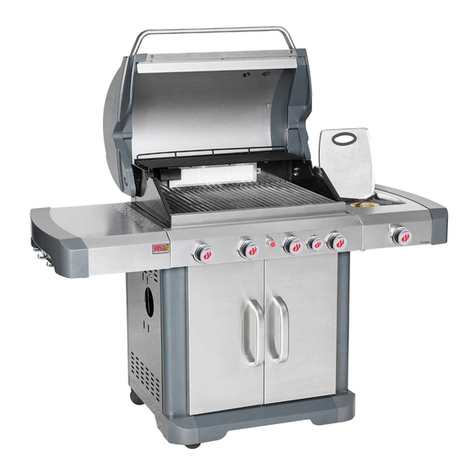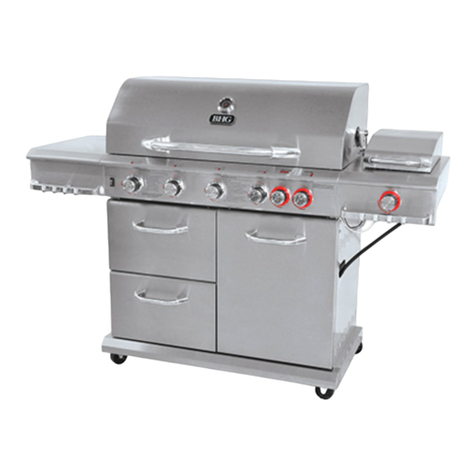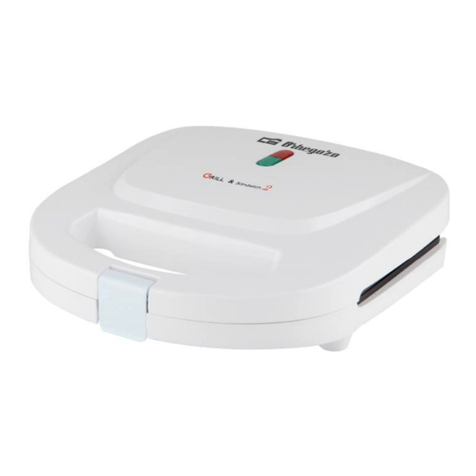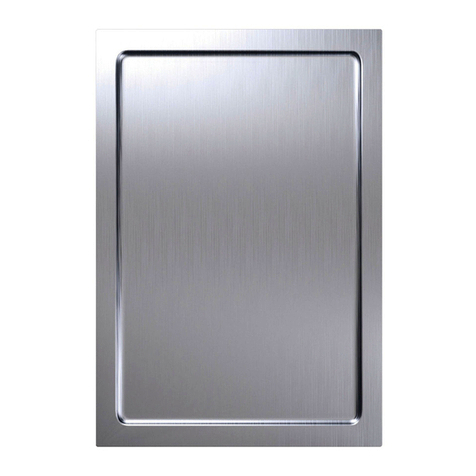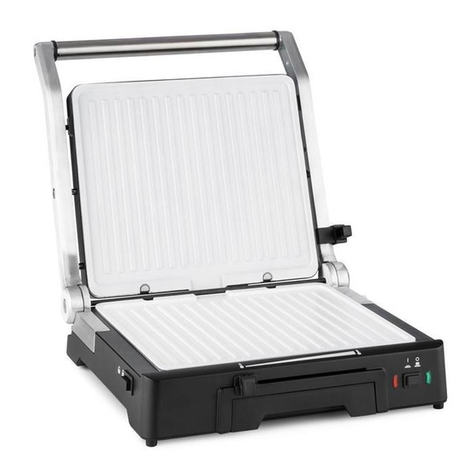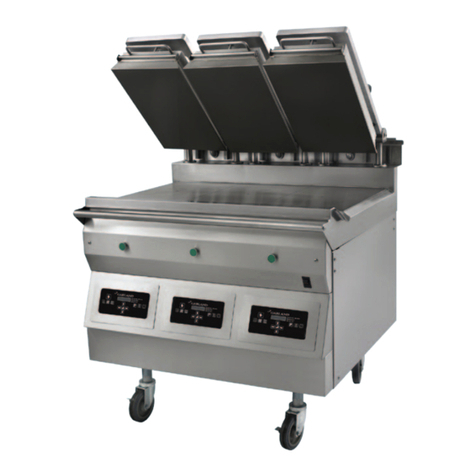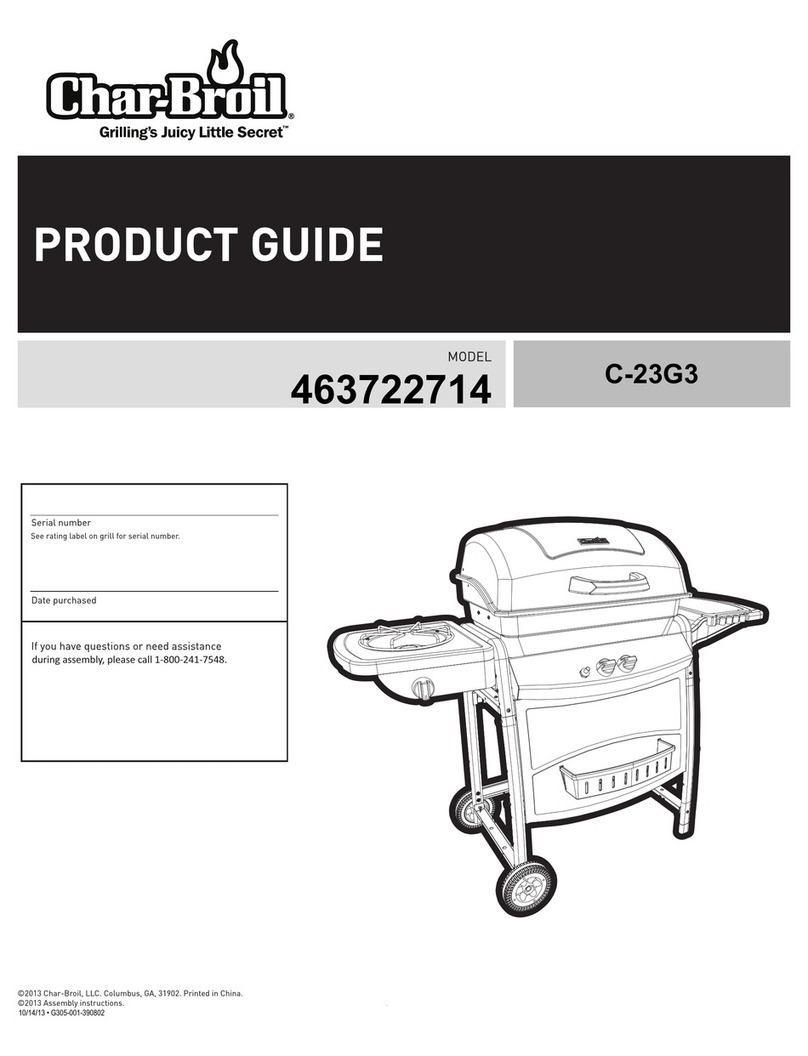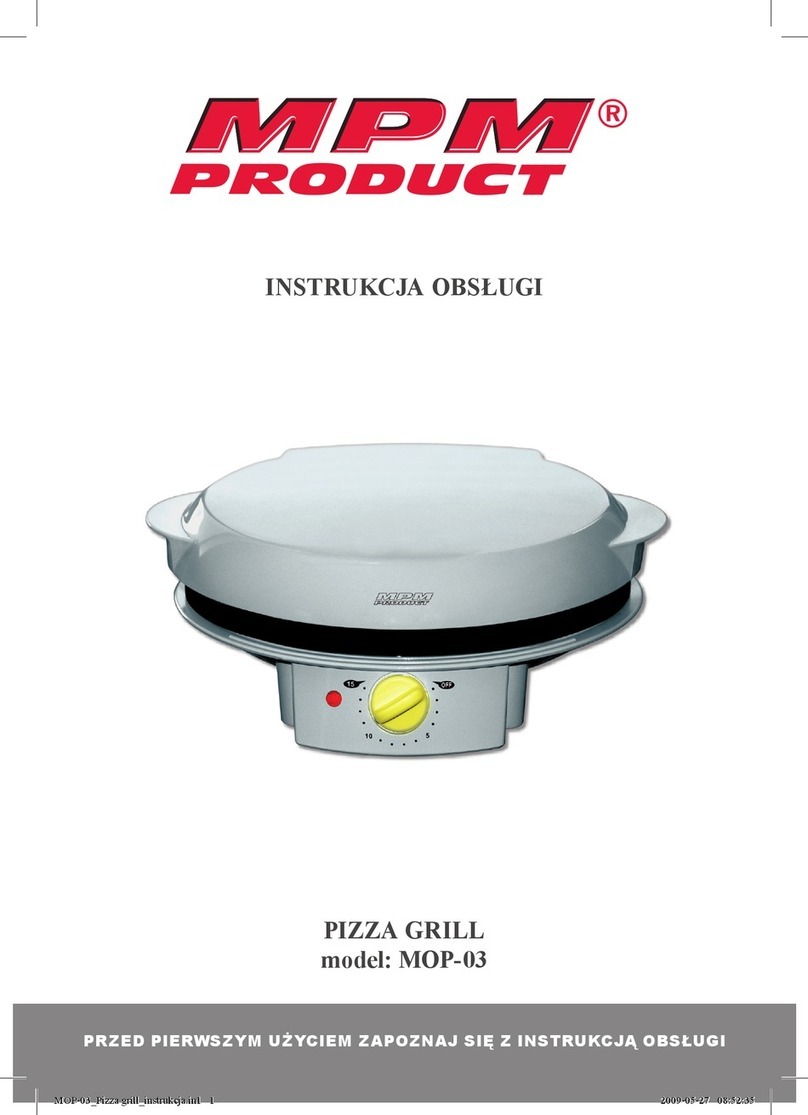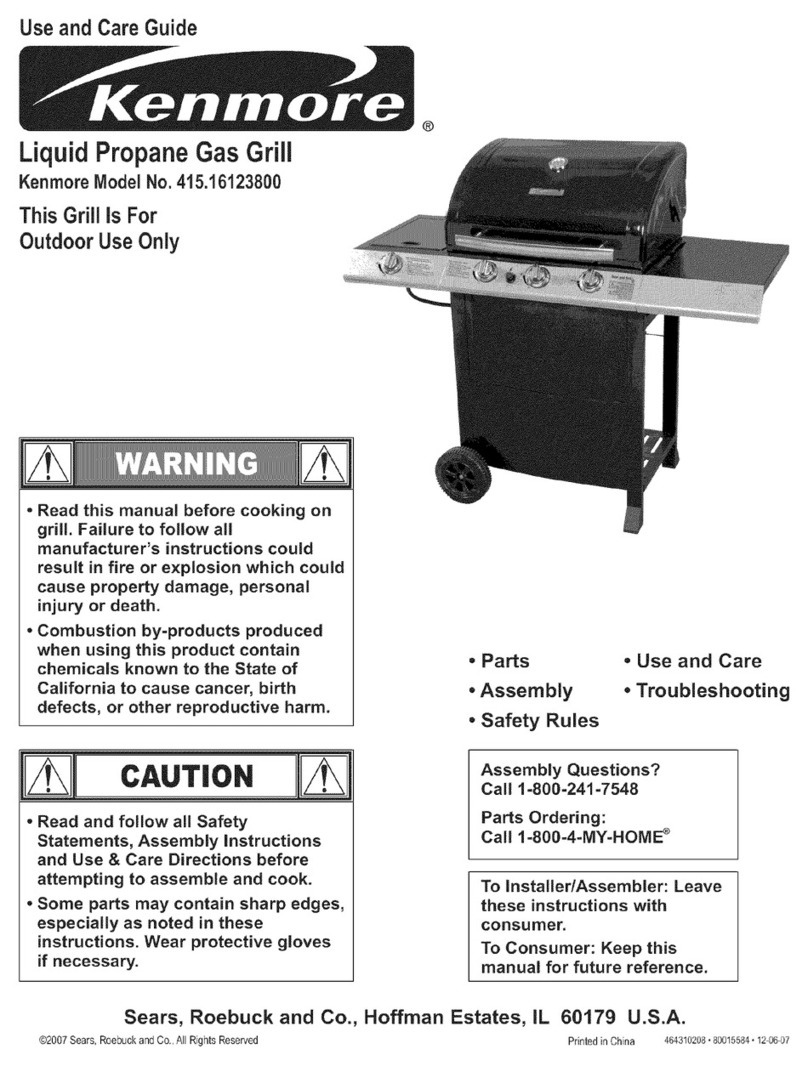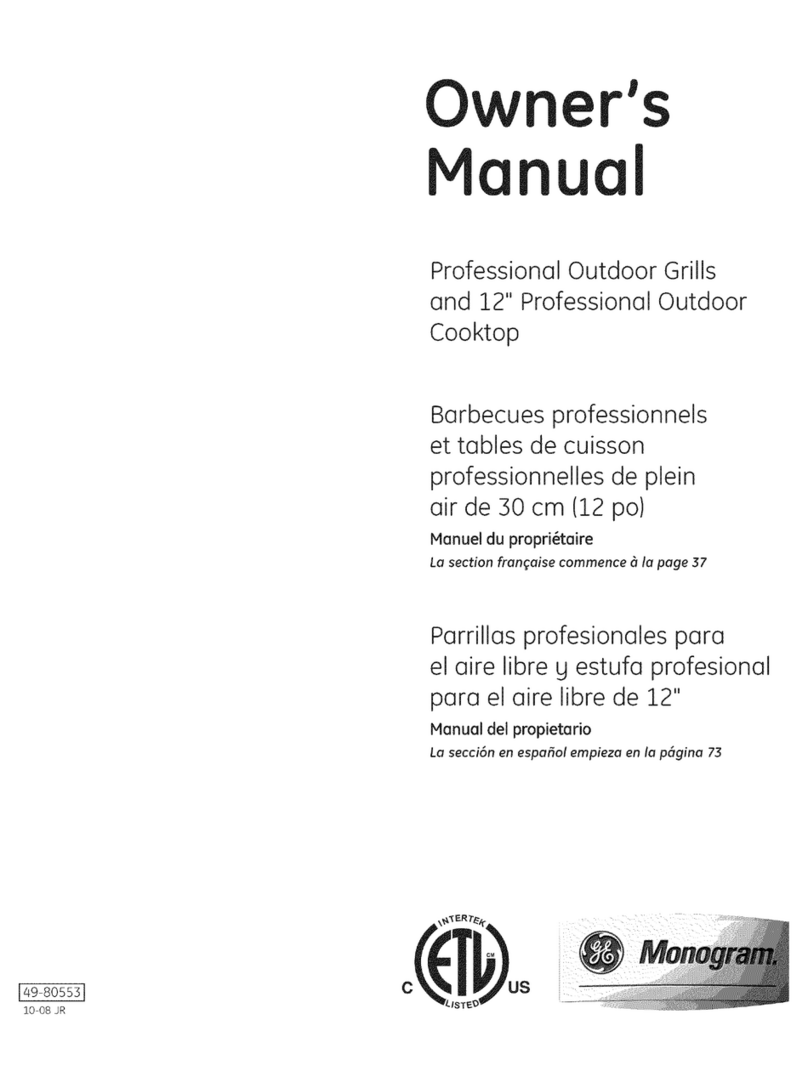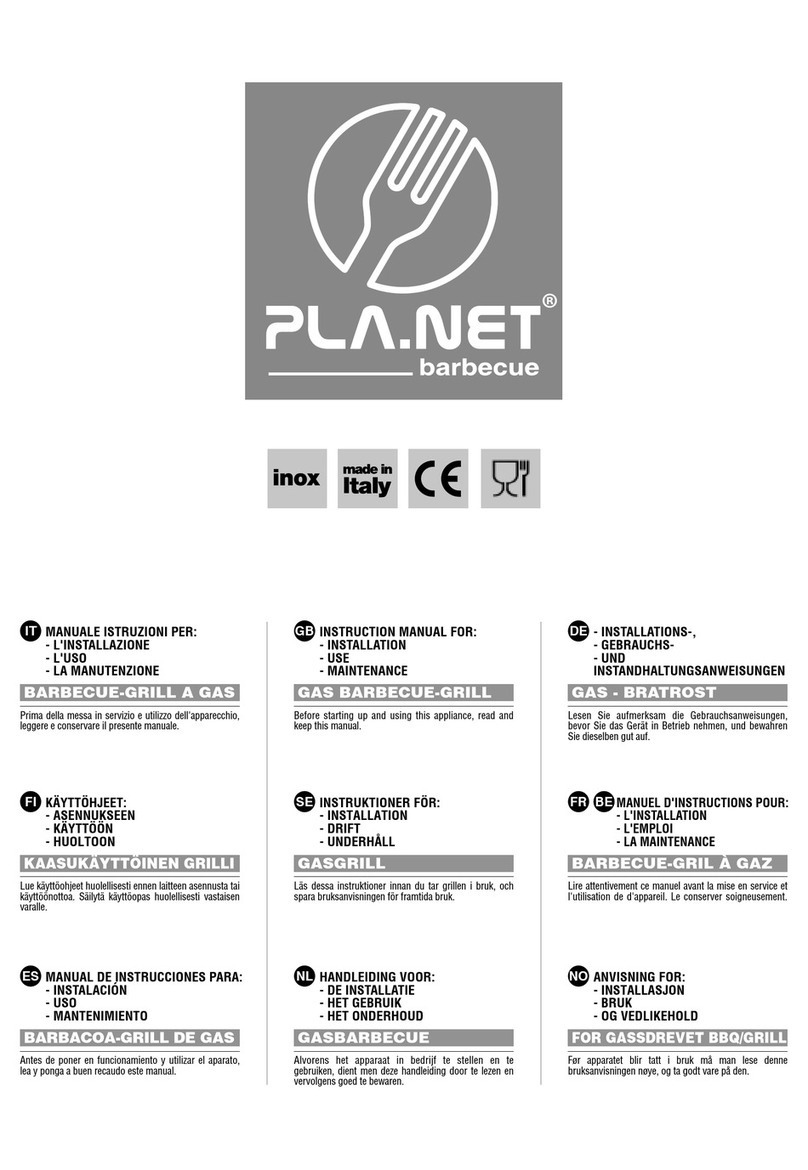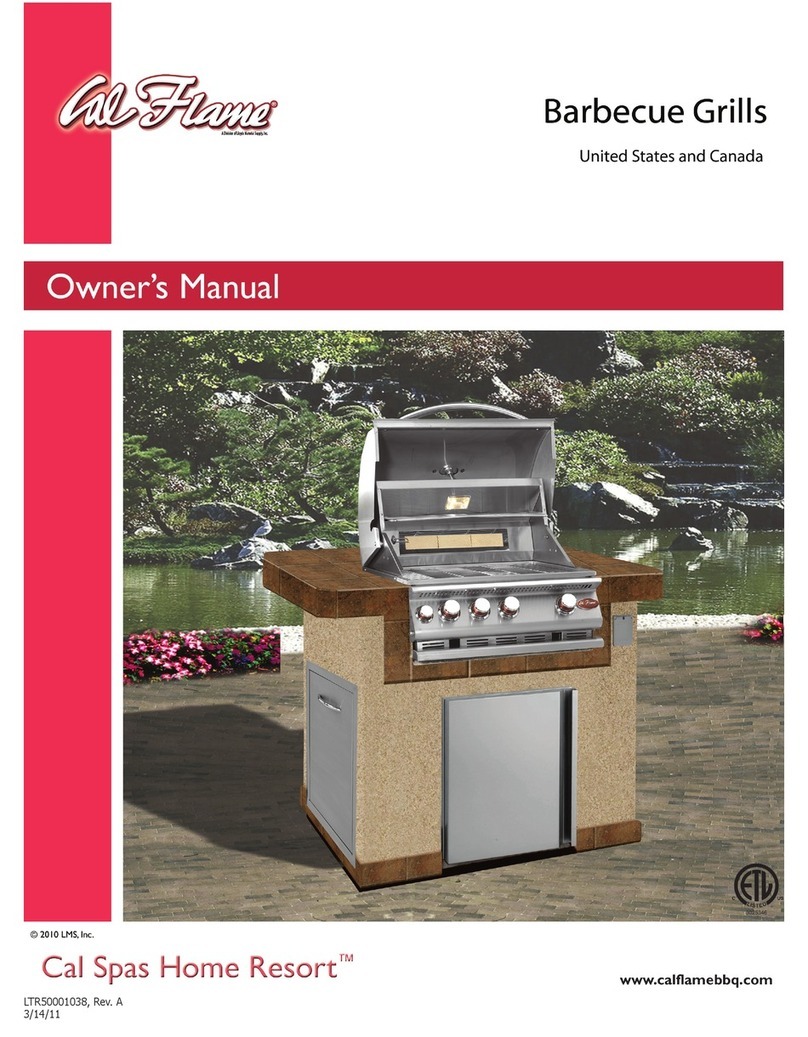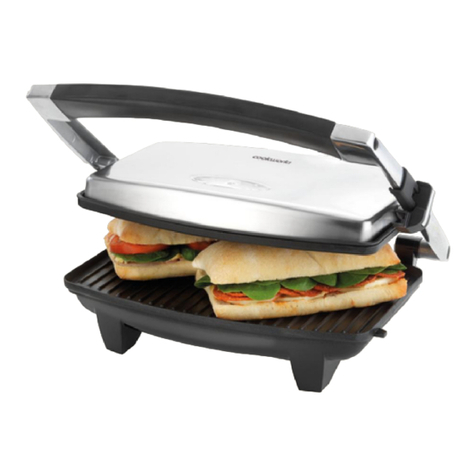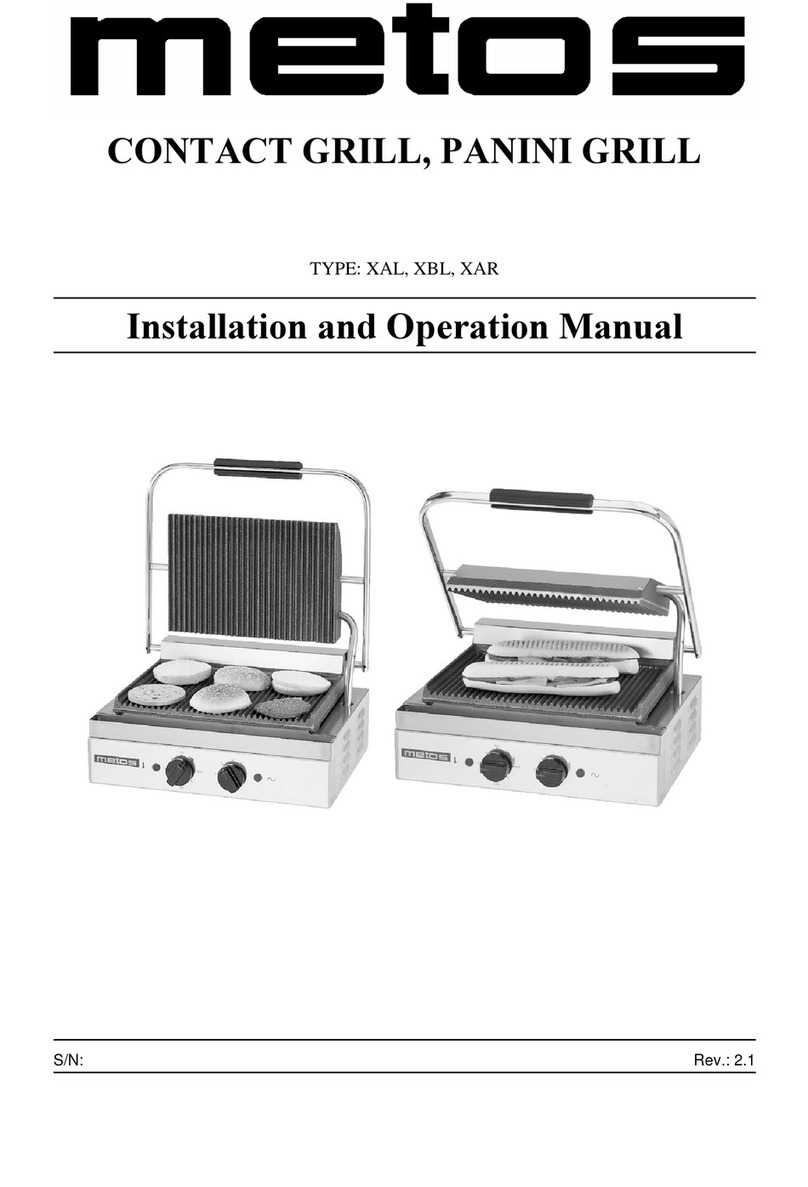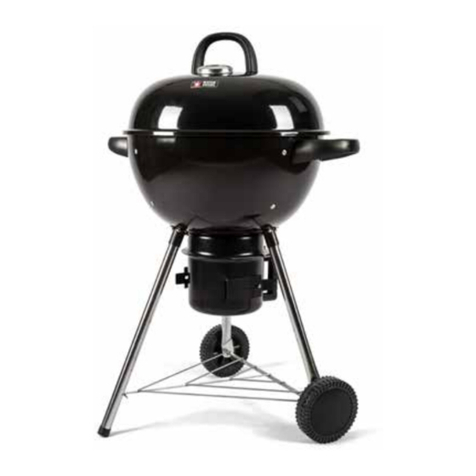
5
BARBECUE-GRILL GAS INCASSO | IT
• L’apparecchio se installato in una struttura chiusa richiede la presenza di aperture di ventilazione (Vedi A1 - FIG. 5).
• Per un corretto funzionamento dell’ apparecchio è indispensabile garantirgli una ventilazione che permetta un afusso d’aria di pari portata a
quella utilizzata durante la combustione. Si ricorda che l’aria necessaria alla combustione è di 2 m3/h per ogni KW di portata termica nominale
(vedi targhetta identicazione). Nella struttura di supporto se usata come vano porta bombola si dovrà predisporre un foro di areazione per
l’afusso d’aria,il foro può essere posizionato sulla parte frontale o posteriore della struttura e deve rispettare le previste dimensioni. (vedi TAB.
3 e FIG. 5).
2.1 VANO BOMBOLA
La bombola di GPL se posizionata sotto l’apparecchio deve essere isolata dal pannello non combustibile.
Il vano deve essere conforme ai requisiti delle Norme Nazionali in vigore che prevedono ci siano delle aperture di ventilazione sulla parte
superiore e sul fondo del vano, ognuna delle quali deve fornire una supercie libera di almeno 200 cm2.
Vedi FIG. 5, A2 e A3 - Apertura per aereazione vano porta bombola. (eseguire se si posiziona la bombola sotto l’apparecchio)
ATTENZIONE:
• Con questo apparecchio è possibile utilizzare varie tipologie di bombole, si consiglia di utilizzare bombole GPL con le caratteristiche indicate
in tabella.
• Maneggiare la bombola sempre con cura.
• Utilizzate sempre la bombola in posizione verticale.
• Posizionare la bombola in un luogo accessibile per facilitarne l’apertura o la chiusura.
• Tenere la bombola lontano da fonti di calore
2.2 VENTILAZIONE LOCALI
• L’apparecchio non è collegato ad un dispositivo di evacuazione dei prodotti di combustione quindi deve essere installato in luoghi
permanentemente ventilati, come previsto dalle Norme Nazionali in vigore. Nel locale in cui è installato l’apparecchio deve poter afuire tanta
aria quanta ne viene richiesta dalla regolare combustione del gas e dal necessario ricambio del locale stesso. Le prese di immissione aria,
protette da griglie, devono essere opportunamente dimensionate seguendo le Norme nazionali e collocate in modo da non essere ostruite,
neppure parzialmente. Lo scarico dei prodotti della combustione deve essere portato all’esterno attraverso canne fumarie o mediante cappe
di aspirazione o elettroventilatori, con una portata tale da garantire un ricambio orario d’aria di almeno 3 volte il volume del locale (vedi
Norme Nazionali in vigore). L’uso intensivo e prolungato dell’apparecchio può richiedere una maggiore ventilazione, ad esempio l’apertura di
una nestra o una ventilazione più efcace, ad esempio: dove presente aumentando il livello di ventilazione meccanica. Si ricorda che l’aria
necessaria alla combustione è di 2 m3/h per ogni KW di portata termica nominale (vedi targhetta identicazione).
3 ALLACCIAMENTO DELL’APPARECCHIO
• Questo apparecchio può essere predisposto per il funzionamento a GPL o metano. Fare riferimento a “Tabelle caratteristiche bruciatori ed
ugelli” per conoscere la pressione dei bruciatori e la corretta dimensione degli ugelli. (vedi TAB. 1)
• La pressione di alimentazione deve rispettare i valori riportati nella tabella al paragrafo “Tipologie di gas e Paesi di appartenenza”. (vedi TAB. 2)
Tutte le regolazioni necessarie al corretto funzionamento e il collaudo dell’apparecchio sono effettuate in fabbrica.
• Per un corretto funzionamento utilizzare un regolatore di pressione, tubo di collegamento e raccordi in accordo con le direttive EN e realizzare
il collegamento sulla bombola nel rispetto delle prescrizioni stabilite dalle norme vigenti.
• Per il montaggio o la sostituzione del tubo (controllare periodicamente la data di scadenza dello stesso), è necessario fare riferimento alle
normative vigenti.
3.1 FUNZIONAMENTO CON GAS BUTANO/PROPANO (VEDI TABELLA DATI TECNICI)
• Per gli allacciamenti alla bombola, utilizzare solo i raccordi e i regolatori previsti dalla normativa in vigore. L’uso di prodotti non conformi
potrebbe seriamente compromettere la sicurezza dell’apparecchio.
L’allacciamento dell’apparecchio alla bombola deve avvenire a mezzo di:
• Regolatore di pressione con taratura ssa secondo le normative nazionali vigenti (pressione di funzionamento come riportato in TAB. 1)
• Tubi essibili secondo le normative nazionali vigenti, di lunghezza adeguata (max 1,5 mt).
ATTENZIONE: Devono essere montati senza pieghe, torsioni e non devono entrare in contatto con il fondo dell’apparecchio. ( Fig. 2-Fig. 3)
3.2 ALLACCIAMENTO DELL’APPARECCHIO ALLA BOMBOLA GAS
• Vericare che la guarnizione del rubinetto della bombola non sia danneggiata.
• Collegare il regolatore di pressione alla bombola (1).
• Vericare che i rubinetti dell’apparecchio siano in posizione chiuso.
• Fissare il tubo (2) al regolatore (1) se non già ssato in base alla normativa vigente.
• Fissare l’altra estremità del tubo (2) all’attacco dell’apparecchio, inserendo correttamente la guarnizione (4) tra l’attacco dell’apparecchio (3) e
il portagomma (5) stringendo il tubo essibile con la fascetta (6)..
FIG. 2
Esempio di bombola posizionata sotto
il pannello non inammabile
Fori aereazione Barbecue
Griglie o fori aereazione
da 200 Cm2
MAX 1,50 mt
Esempio di bombola posizionata nella
parte posteriore
Fori aereazione Barbecue MAX 1,50 mt
Max
(Kg)
H
(mm)
Ø
(mm)
5 500 270
